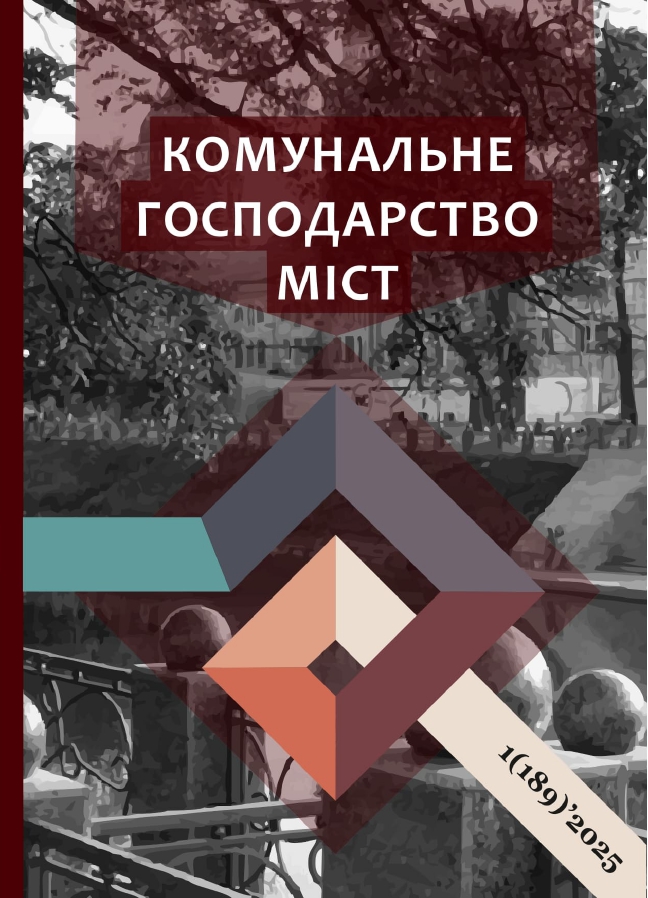APPLICATION OF SWOT ANALYSIS IN FORMING A STAFF MENTAL HEALTH MANAGEMENT SYSTEM
DOI:
https://doi.org/10.33042/2522-1809-2025-1-189-441-446Keywords:
SWOT analysis, stuff, mental health, work environment, safety, key performance indicatorsAbstract
In today's realities, there is a steady trend towards an increase of psycho-emotional tension among the population: the pandemic, and then the war in Ukraine, created a constant sense of danger and instability, which negatively affects people's mental health and has a negative socio-economic impact. Mental health is a concept that emphasizes the importance of mental and emotional well-being in the context of ensuring overall safety both at the individual level and within a particular organization and society as a whole. Psychosocial risks in the production environment conditions can lead to professional burnout, a decrease in the level of professional performance, which is a consequence of working in conditions of high stress, significant emotional or mental stress and other factors. Mental health, in turn, significantly affects the behavior of employees, their ability to effectively perform tasks, as well as the ability to make decisions to ensure their own safety and the safety of others. The purpose of the article is to analyze the possibilities of SWOT analysis for developing or improving a personnel mental health management system based on the formulation of a set of qualitative and quantitative indicators. Based on the analysis of factors that affect the psycho-emotional state of employees, as well as the possibilities of SWOT analysis for studying issues of health care and personnel support, the use of key performance indicators (KPI) is proposed, which allows not only qualitatively, but also quantitatively assess the effectiveness and efficiency of the personnel mental health management system. Performance indicators are assigned to each of the SWOT analysis categories: strengths, weaknesses, opportunities, threats. Examples of setting goals and methods for measuring the degree of their achievement that can be used are also given. To form a personnel mental health management system, the company must develop its own KPI regulations, which will indicate the goals of implementing KPIs, to whom they apply; a list of KPIs with a precise description and calculation methods; KPI measurement methods; responsible persons; frequency of research; mechanisms for adjusting indicators. This approach allows the company to create an effective strategy to improve the mental health of employees, which has a positive impact on safety in the workplace.
References
Закон України «Про систему охорони психічного здоров’я в Україні» https://zakon.rada.gov.ua/laws/show/en/4223-20?lang=uk#Text.
Mental health systems capacity in European Union Member States, Iceland and Norway /World Health Organization 2024 https://iris.who.int/bitstream/handle/10665/378308/WHO-EURO-2024-9529-49301-73695-eng.pdf?sequence=1
ДСТУ ISO 45001:2019 "Системи управління охороною здоров’я та безпекою праці. Вимоги та настанови щодо застосування (ISO 45001:2018, IDT)".
Наугольник, Л. Б. Психологія стресу : підручник / Л. Б. Наугольник. – Львів: Львівський державний університет внутрішніх справ, 2015. – 324 с.
Andrea Foster-Mack Recognizing Mental Health as A Core Workplace Safety Pillar Nov 01, 2023 https://ohsonline.com/Articles/2023/11/01/Recognizing-Mental-Health-as-A-Core-Workplace-Safety-Pillar.aspx?Page=1.
Emily Kirby, L. Casey Chosewood. Supporting Mental Health in the Workplace https://blogs.cdc.gov/niosh-science-blog/2024/04/15/workplace-mental-health-resources/.
TJ Scimone. Mental health is the foundation of workplace safety January 6, 2020 https://www.ohscanada.com/opinions/mental-health-foundation-workplace-safety/.
Jain A, Hassard J, Leka S, Di Tecco C, Iavicoli S. The Role of Occupational Health Services in Psychosocial Risk Management and the Promotion of Mental Health and Well-Being at Work. Int J Environ Res Public Health. 2021 Mar 31;18(7):3632. doi: 10.3390/ijerph18073632. PMID: 33807352; PMCID: PMC8036601.
Mental health at work 2 September 2024 https://www.who.int/news-room/fact-sheets/detail/mental-health-at-work.
2023 Mental Health at Work Report https://www.mindsharepartners.org/mentalhealthatworkreport-2023.
Workers appreciate and seek mental health support in the workplace. APA’s 2022 Work and Well-being Survey results https://www.apa.org/pubs/reports/work-well-being/2022-mental-health-support#:%7E:text=A%20majority%20%2881%25%29%20of,into%20their%20future%20job%20decisions.
Teoli D, Sanvictores T, An J. SWOT Analysis. [Updated 2023 Sep 4]. In: StatPearls [Internet]. Treasure Island (FL): StatPearls Publishing; 2025 Jan-. Available from: https://www.ncbi.nlm.nih.gov/books/NBK537302/.
Zoschke IN, Betancur A, Ehsan S, et al. SWOT Analysis and Recommendations for Community Health Workers and Stakeholders Responding to COVID-19 Health Inequities. Health Promotion Practice. 2024;25(6):971-984. doi:10.1177/15248399231201131.
Mikolajczak-Degrauwe K, Slimmen SR, Gillissen D, de Bil P, Bosmans V, Keemink C, Meyvis I, Kuipers YJ. Strengths, weaknesses, opportunities and threats of peer support among disadvantaged groups: A rapid scoping review. Int J Nurs Sci. 2023 Sep 15;10(4):587-601. doi: 10.1016/j.ijnss.2023.09.002. PMID: 38020843; PMCID: PMC10667317.
ISO 45003-2021 Occupational health and safety management — Psychological health and safety at work — Guidelines for managing psychosocial risks.
Downloads
Published
How to Cite
Issue
Section
License
The authors who publish in this collection agree with the following terms:
• The authors reserve the right to authorship of their work and give the magazine the right to first publish this work under the terms of license CC BY-NC-ND 4.0 (with the Designation of Authorship - Non-Commercial - Without Derivatives 4.0 International), which allows others to freely distribute the published work with a mandatory reference to the authors of the original work and the first publication of the work in this magazine.
• Authors have the right to make independent extra-exclusive work agreements in the form in which they were published by this magazine (for example, posting work in an electronic repository of an institution or publishing as part of a monograph), provided that the link to the first publication of the work in this journal is maintained. .
• Journal policy allows and encourages the publication of manuscripts on the Internet (for example, in institutions' repositories or on personal websites), both before the publication of this manuscript and during its editorial work, as it contributes to the emergence of productive scientific discussion and positively affects the efficiency and dynamics of the citation of the published work (see The Effect of Open Access).

